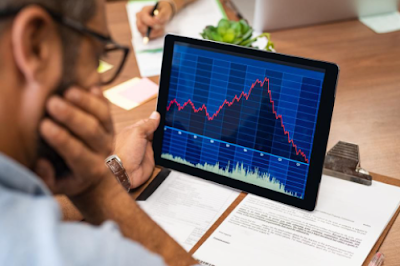As the likelihood of additional federal stimulus fades, US stock investors are returning their focus to the coronavirus pandemic and not liking what they see.
High-frequency data that tracks economic activity shows a slowdown in the recovery from the height of the lockdowns, with Americans again cutting back on flights and going out to eat less often. Public-transit use also remains low, while jobless claims are stubbornly elevated. Meanwhile, the prospects for a vaccine in the next few months have also waned just as the latest data shows an uptick in cases.
That again sent a jolt through financial markets. Equities eked out gains after a volatile session, with tech shares bouncing back from Wednesday’s 3% rout, but the S&P 500 remains on pace for its longest weekly losing streak since August 2019.
For all the things buffeting markets right now, none is more important than the race to find an inoculation to the virus. While Federal Reserve largesse and $3 trillion of federal stimulus helped fuel a torrid five-month rally that began in March, their limitations have become clear as the virus continues to spread.
“We have been trading the likelihood of a vaccine and you can see that in the data,” David Kostin, Goldman Sachs Group Inc.’s chief US equity strategist, said in an interview with Bloomberg TV and Radio.
For proof, he points to a forecasting model that assigns a 52% probability that enough doses to inoculate 25 million Americans will be distributed by the first quarter of next year. That’s down from around 70% at the start of the month and the drop-off coincides with a near-10% selloff in the S&P 500, says Kostin.
Plenty of non-virus worries have also emerged in recent weeks, including fears about a chaotic aftermath to the presidential election as well as heightened tensions between the US and China.
But individual stock moves are easy to pin on virus concerns specifically. As hopes for a vaccine subside, cruise ship operators, airlines, and other stocks that stand to benefit from a return to normalcy are taking a hit.
The NYSE Arca Airline Index has fallen more than 12% over the past four days, on course for its worst week since May. Norwegian Cruise Line Holdings Ltd., Carnival Corp. and Royal Caribbean Cruises Ltd. are each down more than 9% this week.
The concern is that the worst of the coronavirus fallout is yet to come, says Tom Lee, co-founder and head of research at Fundstrat Global Advisors. Back-to-school efforts and the flu season are adding to fears of a new wave of deaths, according to Mr. Lee.
On Thursday, data showed a slight increase in US jobless claims for last week, contrasting with estimates for a decline and underscoring a fitful economic recovery. And with Congress still deadlocked on another stimulus package, Goldman economists led by Jan Hatzius say further support may have to wait until 2021. The team cut its fourth-quarter forecast and now sees economic growth of 3%, down from a previous projection of 6%.
Meanwhile, some high-frequency data, which is closely tracked by many investors for its real-time insights on the economy, are flashing warning signs. A social-distancing tracker from strategists Jim O’Sullivan and Oscar Munoz at TD Securities—which looks at factors including transit use, hotel occupancy rates, and changes in the number of restaurant diners, among others—signals “a slowing in activity after strong gains, likely due in part at least to a waning of fiscal support.”
New-business applications are also falling off after a summertime surge, the pair says, while mobility data for restaurants, theme parks, shopping centers, museums, and movie theaters has flattened. That tends to closely track consumer spending and could portend a spending pullback in the coming months.
“The easy part of the recovery is over,” said Chris Gaffney, president of world markets at TIAA Bank. “Investors see that a lot of the easy money, big returns from the recovery are in the past and now it’s going to be a tougher slog forward for equity prices to regain any kind of momentum.” — Vildana Hajric and Lu Wang/Bloomberg
Source: Peso Economics



No comments:
Post a Comment